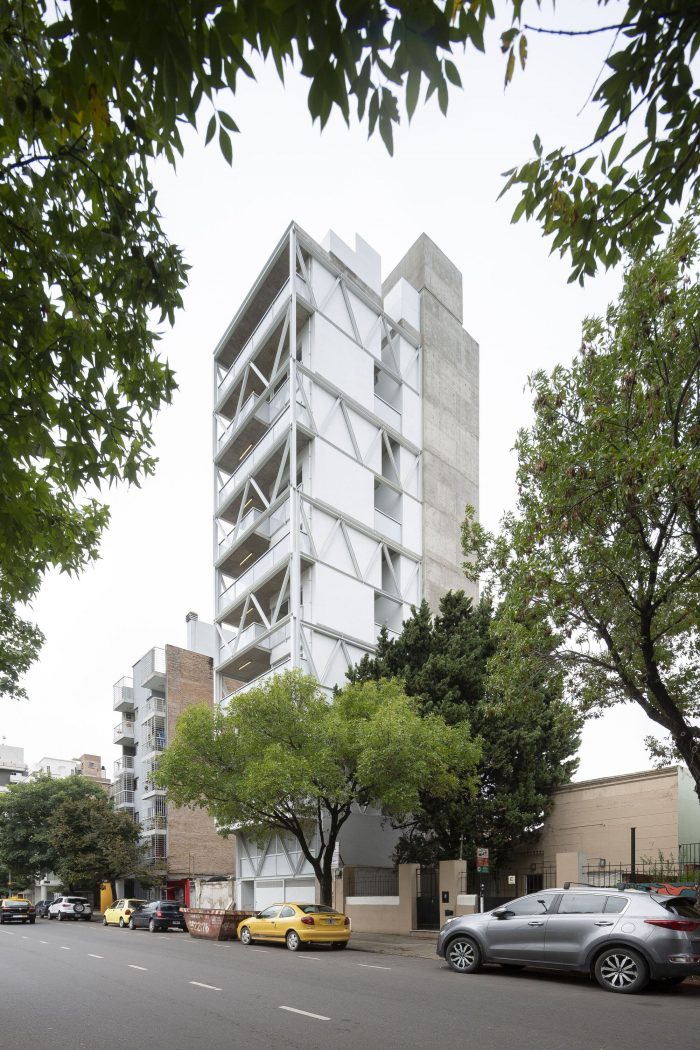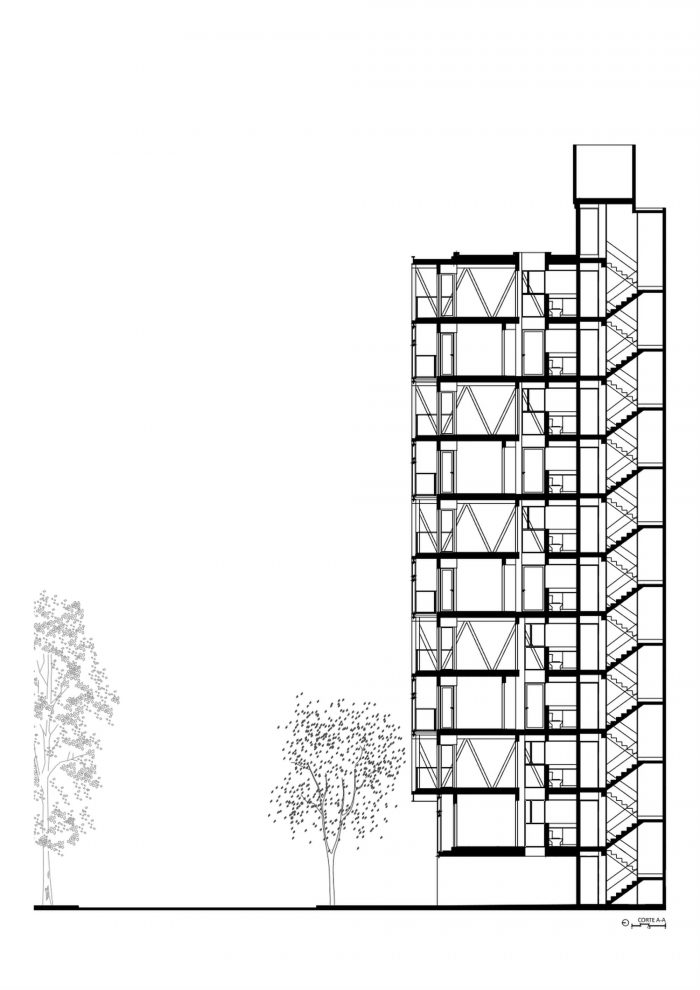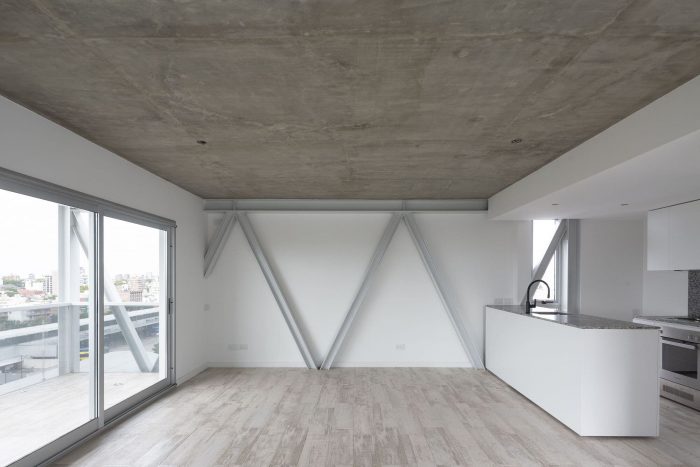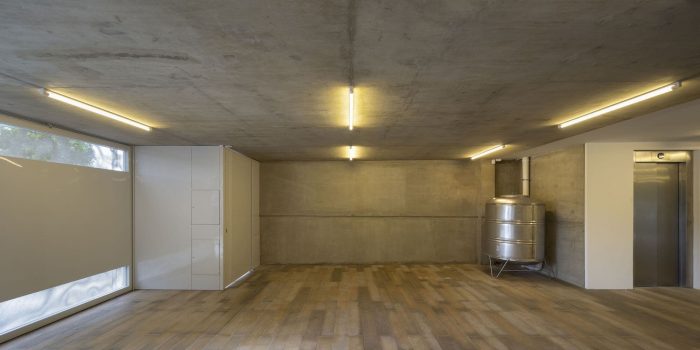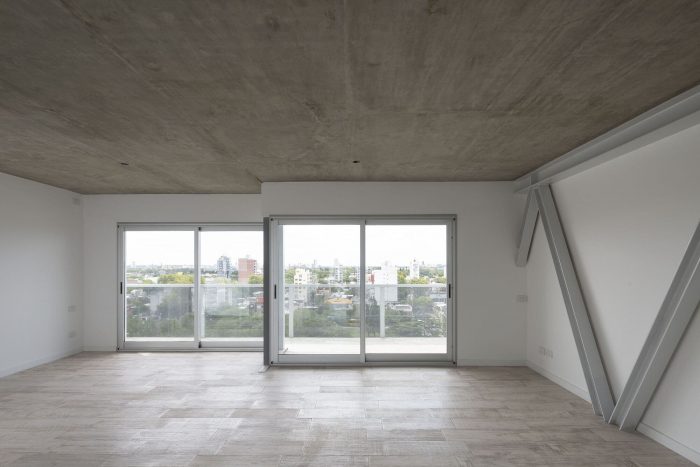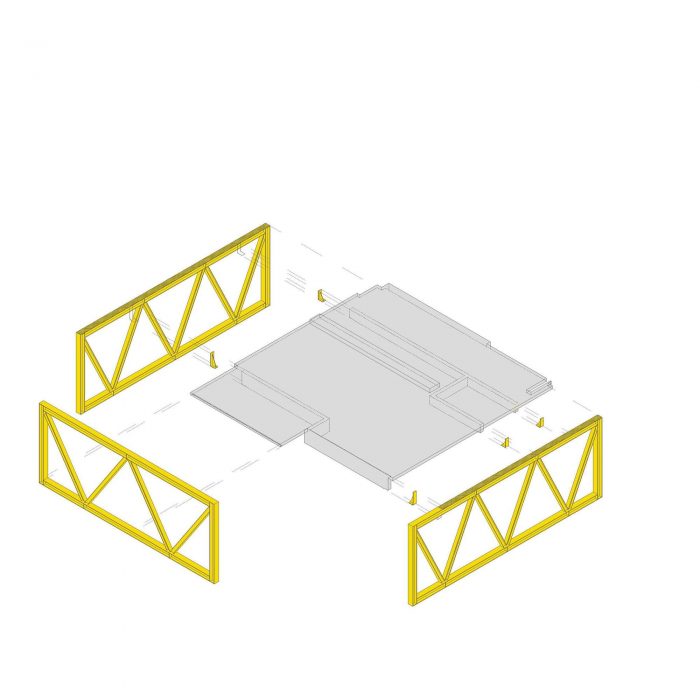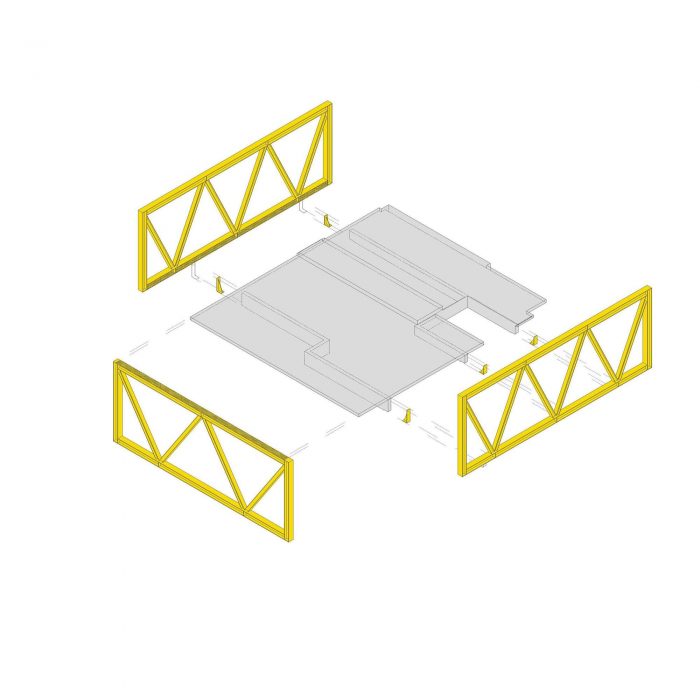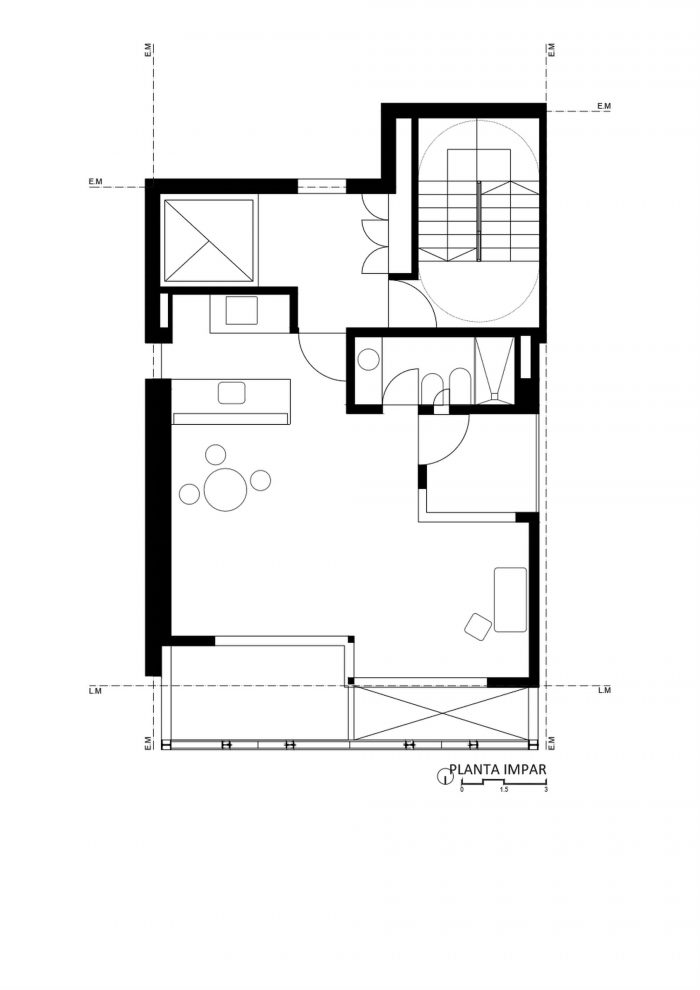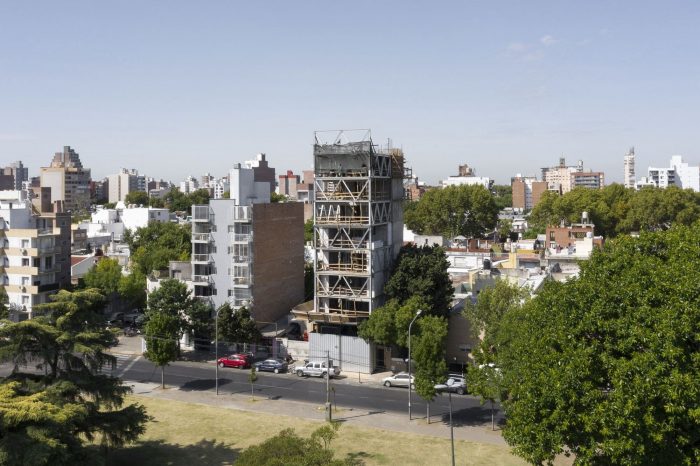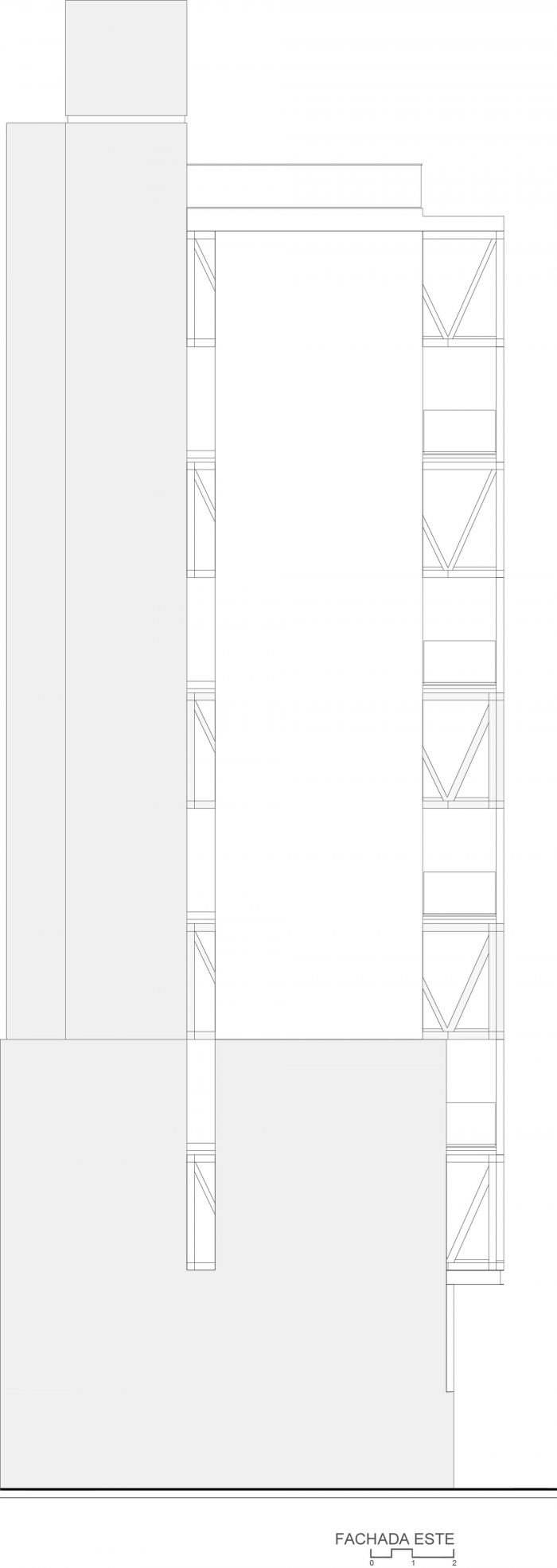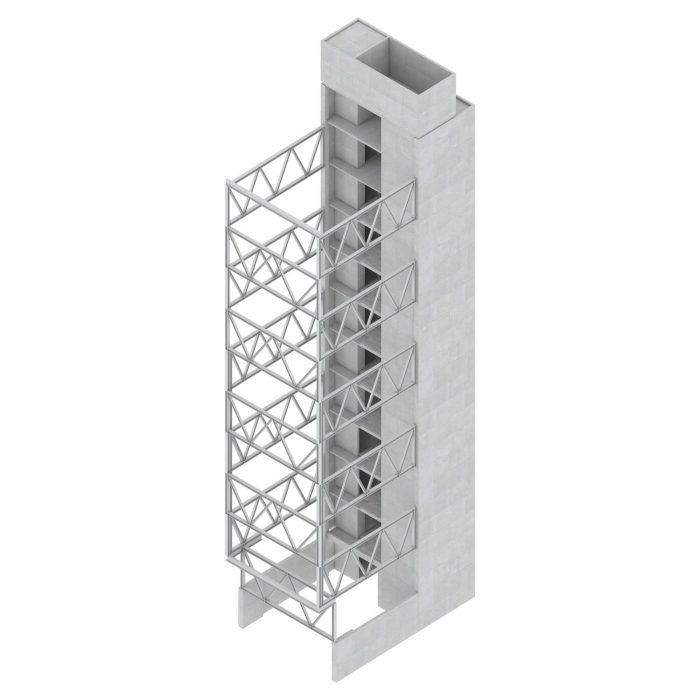为了描述支持这个项目的论证,我们发现从一个问题开始是有趣的。如何调和我们为未来生活所拥有的不同资源,以产生一个在房地产市场中运作的建筑?在生产性、建设性和社会性经济的独特性中,也就是2019-2021年阿根廷的资源经济中,我们提议描述一个具体的和当地的模式,在这个模式中,经济、物流、资源、生产系统以及通过金属结构实现工业化的某个方面成为工作室的一个工作系统,在某些正在进行的项目中,特别是在这个最近完成的作品中。
To describe the argumentation that supports this project, we find it interesting to start with a question: How to reconcile the different resources we have for future living, for producing an architecture that operates within the real estate market? Within the uniqueness of the productive, constructive, and social economy, that is, the resource economy of Argentina in 2019-2021, we propose the description of a specific and local model in which the economy, logistics, resources, production systems, and a certain aspect of industrialization through metal structures became a working system for the studio, in certain projects underway and specifically in this recently completed work.
利用这些情况,这种背景和机会,我们希望这个委托能起到提出辩论的作用,并尝试在当地高层住宅建筑的生产之外进行操作。通过这种方式,我们用一个实际和实用的系统来工作,将这个工作系统概念化,即建筑师用系统来反对模型的想法。我们提出了四个参考:20世纪工业建筑的某个方面,文丘里和斯科特-布朗在(学习拉斯维加斯),Atelier Bow-Wow在(东京制造)和恩里克-沃克在(普通)。这四个参考文献显然彼此不同,但有共同的基本问题:它们自下而上地运作,它们与现实合作,它们是务实的,与抽象模型格格不入。它们是一个允许在学科的边缘运作的系统。
Taking advantage of these circumstances, this context, and opportunity, we wanted the commission to serve to propose a debate, and try to operate outside the local production of high-rise residential buildings. In this way we work with a practical and pragmatic system, conceptualizing this working system, the idea of the architect working with systems against models. Four references are proposed: a certain aspect of the industrial architecture of the 20th century, Venturi and Scott Brown in (Learning Las Vegas), Atelier Bow-Wow in (Made In Tokyo) and Enrique Walker in (The Ordinary). These four references are clearly different from each other, but share fundamental issues: they operate from the bottom up, they work with reality, and they are pragmatic and alien to abstract models. They are a system that allows operating on the margins of the discipline.
这四种方法汇合在一个建筑中,这个建筑的产生是对生产手段和现实的使用和战略操作的结果,而不是一个审美方案,或通过应用一种方法。当我们把它转移到我们工作室的工作系统中时,具体到A01号楼,我们不仅从这些普通和通用的建筑中获得灵感,而且还利用工业系统来利用它们。而对于这个看似中性的 “碎片和零件 “系统,我们试图增加其价值,并根据其自身的规则进行工作。这个项目的目的是在建筑的平凡和不平凡之间的这条细线上前进。
The four approaches converge in an architecture that is produced as a result of the use and strategic manipulation of productive means and reality, and not of an aesthetic program, or by application of a method. When we transfer it to our work system in our studio, specifically to Building A01, we are not only inspired by these ordinary and generic architectures, but we also use industrial systems to take advantage of them. And to this system of “pieces and parts” that seems neutral, we try to add value and work with it based on its own rules. The project aims to move in this fine line between the ordinary and the extraordinary of architecture.
这些关于普通的问题,没有建筑师的建筑,以及产生像我们这样的建筑师的工作系统的文化和生产背景,从专业实践的角度来看是很重要的,因为它们表明我们可以从现有的东西开始工作,并在其上产生附加价值。该项目是一系列委托项目的一部分,在阿根廷圣菲省的罗萨里奥市为游客和混合用途创建高层租赁建筑。
These questions of the ordinary, architecture without architects, and the cultural and productive contexts that generate working systems within which architects like us work, are important from the point of view of professional practice because they show that we can work starting from what there is and produce an added value on it. The project is part of a series of commissions to create high-rise rental buildings for tourists and for mixed-use in the city of Rosario, province of Santa Fe, Argentina.
这些项目的发起人属于钢铁行业,这对材料和技术资源的使用形成了初步的限制。这些委托的特殊性在于,发起人将委托的全部开发工作交给我们的工作室。我们的任务是确定潜在的地段和所在社区的需求,建立相应的方案和开发。
The promoters of these projects belong to the steel industry, which establishes an initial constraint on the use of material and technological resources. The peculiarity of the commissions lies in the fact that the promoters leave the complete development of the commissions to our studio. It is our task to identify the potential lots and the needs of the neighborhood in which they are located, establishing the corresponding program and development.
目标是实施一个工作系统和方法,将最初的问题和描述性记忆中发展的论点联系起来。换句话说,我们的客户销售金属型材和钢管的事实是一个最初的制约因素,我们试图将其转化为工作发展的机会。
The objective was to implement a working system and a methodology relating the initial problems and the arguments developed in the Descriptive Memory. In other words, the fact that our client sold metallic profiles and steel tubes was an initial constraint that we tried to transform into an opportunity for the development of the work.
这样一来,使用预制构件的结构最终成为建筑经济、资源经济的典型符号系统,但它也与扎根于阿根廷内部生产领域的建筑符号表达有关,即港口结构和工业建筑。
In this way, the use of structures with preformed elements ends up becoming a symbolic system typical of the economy of construction, the economy of resources, but it also has to do with the architectural symbolic expression rooted in the interior productive territory of Argentina, which are port structures and industrial buildings.
通过使用这些结构,有可能在标准的生产系统中创造出一种具有中性程序性支持特征的建筑。一个同时具有获得象征性价值的特征,即恩里克-沃克提出的传统。通过这种方式,可以建立一个超越限制的论点,一个比原型更复杂的生产。因为正如费德里科-索里亚诺所说,”原型是一个工具,将一个想法具体化,并探索或验证它与现实的关系。它是关于创造一些东西,制作一个实物,测试、探索或传达一个将要被投射的事物或建筑对象的设计理念。” 原型会产生共鸣,因为它加深了用户、客户以及将要建造或制造它的人对建筑对象的理解。
By the use of these structures, it is possible to create an architecture that has that character of neutral programmatic support, within the standard production systems. One that at the same time has a character that acquires a symbolic value, that tradition that Enrique Walker proposes. In this way, an argument that transcends limits can be built, a more sophisticated production than that of the prototype. Because as Federico Soriano says, “A prototype is an instrument to materialize an idea and explore or verify its relationship with reality. It is about creating something, making a physical artifact, testing, exploring, or communicating the design ideas of a thing or architectural object that is going to be projected.” A prototype generates empathy, since it deepens the understanding of the architectural object by users, clients, and also by those who are going to build or manufacture it.
Architects: Federico Marinaro Arquitecto
Area : 847 m²
Year : 2021
Photographs :Javier Agustín Rojas
Architect : Federico Marinaro
Associate Architect : Sofía Settimini
Collaborators : Bruno Turri, Giuliana Colaneri, Juan Cruz Ferreyra, Manuel Giró, Ramiro Busnelli
Engineering : Luciano López
Construction : Puntal SRL
Carpentry : Gonzalo Marinaro
Aluminum Work : Claudio Valenti
City : Rosario
Country : Argentina







